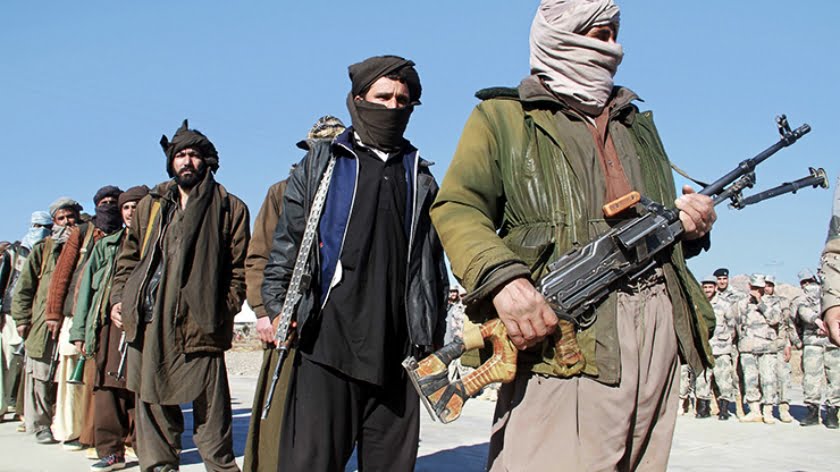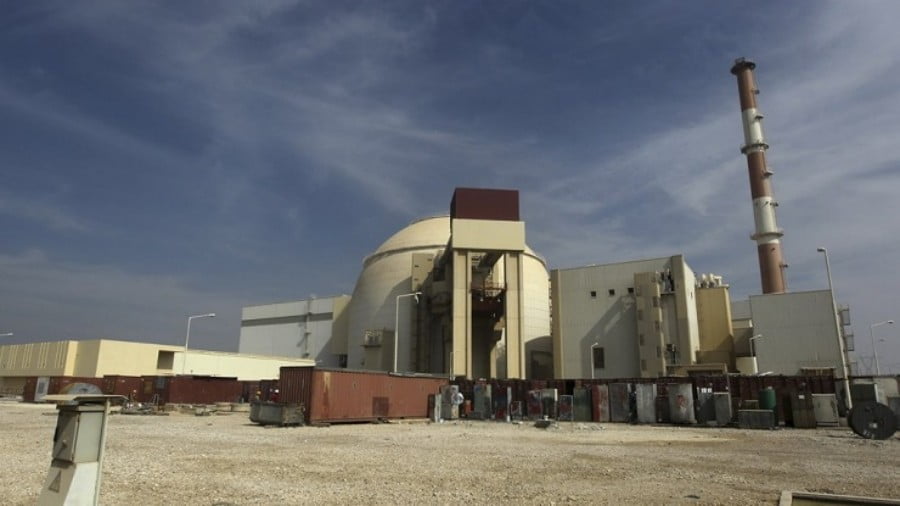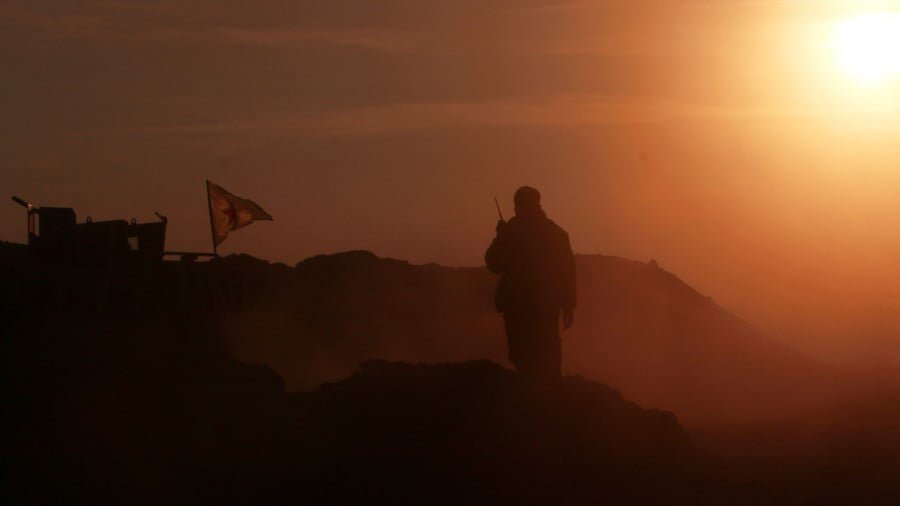The Middle East: Who is Setting Fire to the Entire Region?
Representatives of Iran and the G4+1 (Britain, France, Germany, China, and Russia) are expected to hold the seventh round of discussions on lifting US sanctions against the Islamic Republic in Vienna on November 29. Negotiations were suspended in June when the Islamic Republic held presidential elections. Since then, the new Iranian administration has reviewed the details of six rounds of discussions held under the previous administration. Washington unilaterally withdrew from the nuclear deal in 2018 despite Tehran’s full compliance with its nuclear commitments, as repeatedly confirmed by the UN nuclear agency. The USA then launched a vicious “maximum pressure” campaign against Iran that virtually deprived the country of all economic benefits from the deal.
Iran had been in full compliance with its nuclear obligations for an entire year before deciding to step up its nuclear work as a legal remedial measure in the wake of the US breach of the agreement and the egregious failure of other signatories. Particularly the E3’s European allies, to guarantee its benefits. Joe Biden Administration has said it is willing to make up for former President Donald Trump’s mistake and join the deal. Still, it has shown a prevailing inclination to maintain sanctions as a pressure tool. Tehran insists that all sanctions must first be lifted in a verifiable manner before it can lift its remedial measures.
Of course, the negotiations will be difficult, challenging, and time-consuming until all parties can arrive at some consensus. There will be a certain calming of the situation in the Middle East’s vast and turbulent region.
But another player is seeking to usurp the laurels of the UN and determine as he pleases the fate of peoples living here. The state of Israel and its new government headed by Prime Minister Naftali Bennett and Foreign Minister Yair Lapid are doing their best to torpedo negotiations in Vienna and launch a massive attack on Iranian territory. Given that Iran is not a country that would respond calmly to an unprovoked attack, and since Israel, a non-signatory to the Nuclear Non-Proliferation Treaty where no IAEA inspections have visited, possesses nuclear weapons and their means of delivery, the entire region could be brought to the brink of destruction by atomic madmen.
And this is not an exaggeration; it is the plain facts and current Israeli policy. Even the Israeli media does not hesitate to write regularly about IDF military preparations. 2022 should be the year the Israeli Air Force puts its long-range strike capability against Iran’s nuclear program at the top of its priority list, writes for example the well-informed Israeli newspaper World Israel News with bravado and pride. In recent years, the Israeli Air Force has focused on its ability to strike Iran’s regional strongholds, especially in Syria and Iraq. They are preparing plans to attack Hezbollah in Lebanon based on producing thousands of guided munitions a day and engaging in frequent escalations in Gaza. Now, however, the Israeli Air Force command is looking at targets directly on Iranian soil, fulfilling the will of the top leadership.
Iran’s nuclear facilities, the best known of which are the Natanz and Fordow uranium enrichment facilities, are far away and heavily fortified with advanced air defense systems. In Fordow’s case, the facility is built deep inside the mountain. Assessing the progress made on Iran’s nuclear program is quite challenging. On the one hand, the threshold for launching an attack was not set, and for its part, Iran announced a return to nuclear talks in Vienna with the United States and world powers. But it remains to be seen whether these talks will lead to an actual agreement. Even if the negotiators in Vienna do so, a return to the 2015 nuclear deal, the Joint Comprehensive Plan of Action (JCPOA), would represent a complicated development for the region today. Primarily because of its short-term termination clauses included in the agreement, which will soon expire and pave the way for Iran to become a nuclear threshold state with complete international legitimacy. At this stage, a better and longer-term deal does not seem to be under consideration yet.
While Iran appears to have frozen the parts of its nuclear infrastructure that it would need to break through to a nuclear weapon, developing an explosive mechanism and working to place that mechanism on a missile warhead, it has made progress on the most challenging aspect of building a nuclear weapon: stockpiling enough fissile material. According to the IAEA, Iran enriched more than 120 kilograms of uranium to 20 percent in October, a significant jump from the 84 kilograms it enriched a month earlier. Iran is also openly enriching other, albeit more negligible, amounts of uranium to 60% levels. Estimates of how long it will take the Iranians to make their way to real weapons range from 18 months to two years. Strategically, that’s not a lot of time.
The original 2015 nuclear deal, despite its many gaps, temporarily delayed Iran’s nuclear progress into peaceful development, allowing the Israeli Air Force to invest its resources in other missions and plans. In 2018, after the Trump Administration pulled out of the nuclear deal and imposed destructive anti-human sanctions on Iranians, Tehran faced a severe economic crisis. However, Iran, no longer bound by the JCPOA, has accelerated its uranium enrichment activities.
Now that the Biden Administration is seeking to return Iran to the same deal, any delay the JCPOA would cause to Iran’s nuclear program would be very short-lived. Alternatively, Iran, which has found new ways to export its oil worldwide and survive sanctions, may be tempted to abandon any return to the agreement and instead consolidate its status as a breakthrough nuclear state.
The Israeli press is already revealing what aggressive plans the “gentlemen of the world” are planning, citing military circles. It is hoped that the United States and Israel, Israeli newspapers write, will quietly strike a side deal between themselves that specifies what action will be taken if Iran approaches the breakout zone. Furthermore, ensuring that no one stands in Israel’s way if the hour of confrontation comes and it commits aggression against Iran. In other words, Tel Aviv will attack Iran while the United States provides it with primarily military as well as political and diplomatic support on the world stage. But when air force strategists consider the challenge of reaching Iran, they must plan out a myriad of details, tying them together into cohesive action. Understandably, such preparations take a considerable amount of time and involve an increasing number of different specialists. The Israeli defense establishment is making these preparations louder and more widely known. In September, Israel Defense Forces Chief of Staff Lt. Gen. Aviv Kochavi said: “We have significantly accelerated our preparations for activities in Iran.” He added that “a significant portion of the increased defense budget is earmarked for this. This is very complex work, requiring a lot of intelligence and many operational capabilities, and a lot more ammunition. We’re working on it.”
These comments reflect the true enormity of the force buildup program explicitly needed to strike Iran. They also suggest that whatever plans the Air Force has for such a mission in 2021 will be different from those implemented in 2022. Such a strategy is not new in itself. Israel first began developing its military capability to attack Iran and stop its peaceful nuclear program in 2004 but was not entirely successful. Over time, the chances of Israel needing to deploy these capabilities seem to have increased, even if there is no immediate push for such action tomorrow. The year 2022, Israeli media write, with Iran’s progress and the pending decision on whether to pursue diplomacy, could prove to be a critical turning point.
Without a doubt, the military option of attacking Iran is on the Israeli table. However, the Israelis are well aware of the negative consequences of this turn of events for them. This is not least because a strike by Iran could quickly activate Hezbollah, its heavily armed representative in Lebanon, which is 20 times more powerful today than it was on the eve of the Second Lebanon War in 2006. Hezbollah’s arsenal of more than 150,000 surface-to-surface missiles is designed to deter Israel from launching the very strike its air force is currently preparing for in contingency. Iran’s Shiite allies in Syria and Iraq could also join the fight after the attack, resulting in a major war in the Middle East that would affect many nations, including the US military and its bases. Such a scenario is not inevitable, and the nature of war is unpredictable, but it must be considered in any contingencies involving the plans of some warmongers.
Israel’s increased defense budget for 2021 is about NIS 62.3 billion (and NIS 60 billion for 2022) – a significant increase from defense spending of NIS 57.5 billion in 2020. Ultimately, Iran must understand that a military option is on the table, states World Israel News. As the American strategic focus has shifted to the Far East, “the execution of this function falls to Israel.” In other words, “lords of the world” are planning how they will dispose of their world estate.
But there are very sensible politicians in the region and far beyond who do not think about war but build a peaceful coexistence for all, not just for a select few. Such politicians and their states can put a stop to the delusional plans of the new warmongers. Many politicians believe, and quite rightly so, that even if Iran obtains nuclear weapons, it will not use them against Israel because then there would be a threat of retaliation and a global backlash. Such arguments are effectively taken into account when considering Iran’s likely strategy once it becomes a nuclear power and takes its rightful place in the family of nations of the Middle East.







